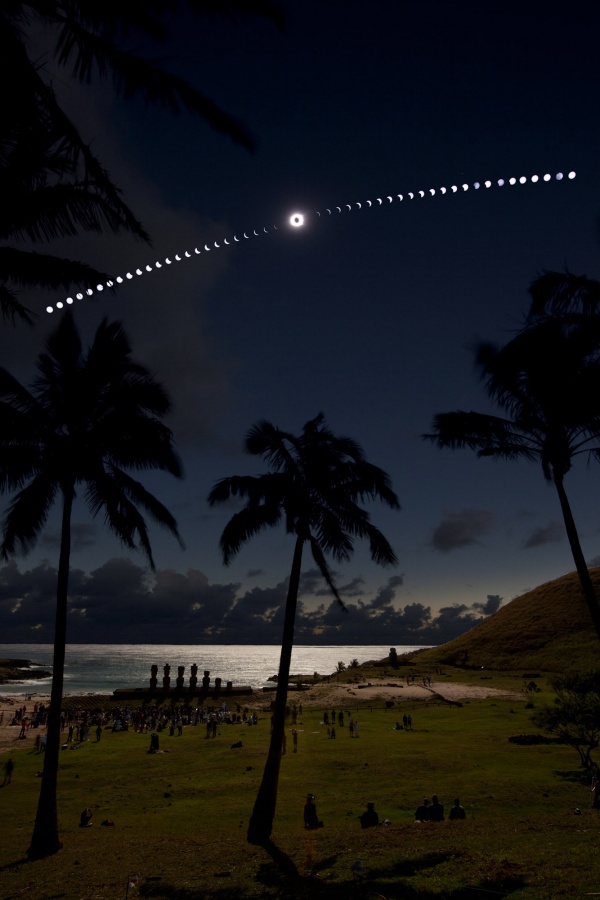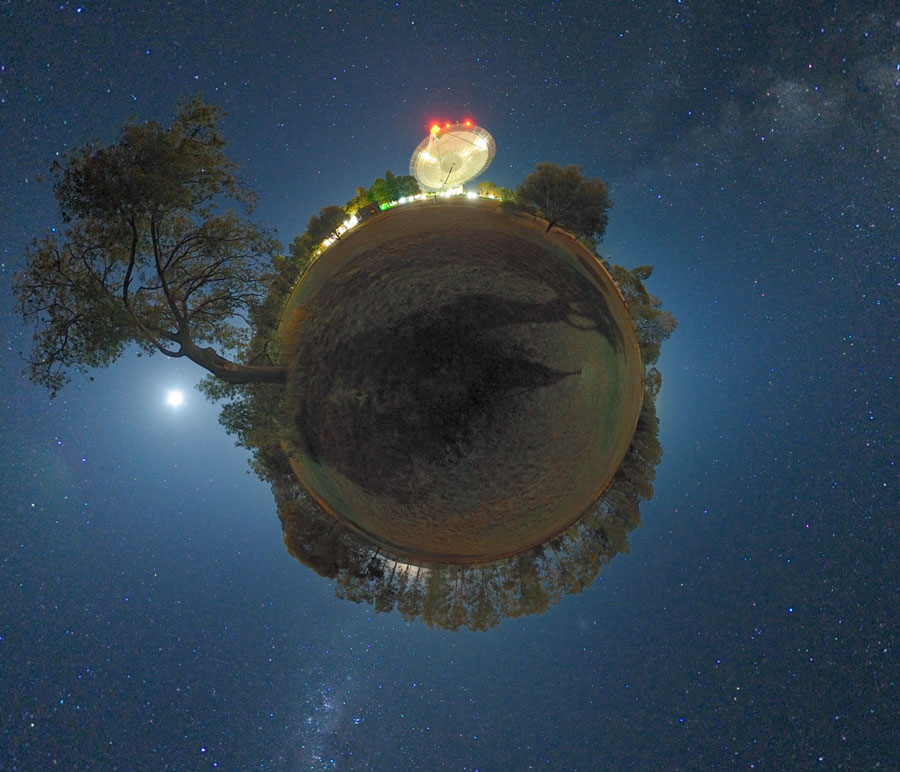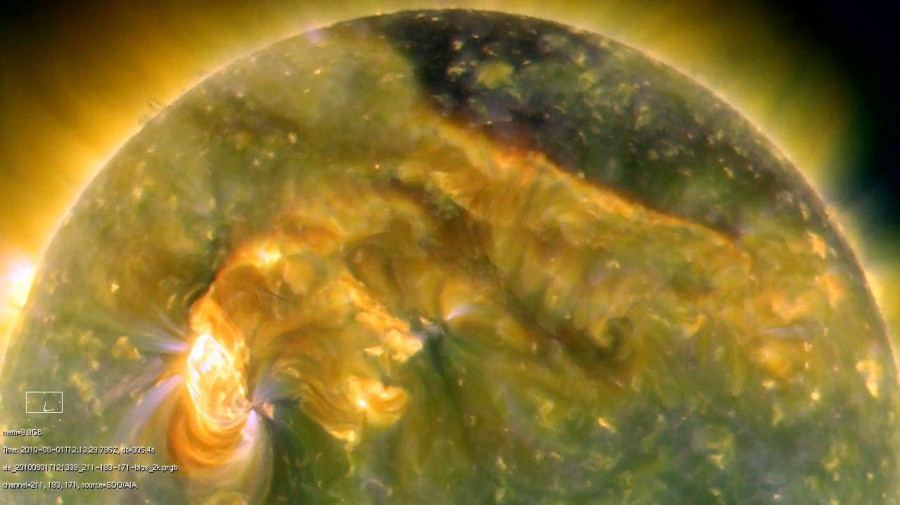 Merliners - Übergang in die Neue Energie
»
Mediathek
»
FILM-Erfahrungen und -Tipps
»
...finde ich sehenswert
Merliners - Übergang in die Neue Energie
»
Mediathek
»
FILM-Erfahrungen und -Tipps
»
...finde ich sehenswert
|
|



Großmeister_in
Informationen anzeigen
|
 Eclipse on the Beach Credit & Copyright: Guillaume Blanchard http://antwrp.gsfc.nasa.gov/apod/ap100730.html Explanation: As the New Moon's shadow slid across the southern Pacific on July 11, people gathered along the white, sandy Anakena Beach on the north side of Easter Island to watch a total solar eclipse. The experience was captured in this tantalizing composite image, constructed from a sequence of 50 consecutive exposures. At their center is the totally eclipsed Sun surrounded by a shimmering solar corona. From the well chosen viewpoint, palm trees appear in silhouette against a darkened sky and the faint light reflected in the water. Of course, towering above the onlookers, at the boundaries of land, ocean, and sky are Moai, the island's mysterious monolithic statues.  Four Planet Sunset Image Credit & Copyright: Jia Hao http://antwrp.gsfc.nasa.gov/apod/ap100731.html Explanation: This mesmerizing sunset photo was taken from the summit of volcanic Mount Lawu, 3,265 meters above sea level, on July 21. The view looks west, toward the city lights of Surakarta (aka Solo), Central Java, Indonesia. Two other volcanic peaks, sharp Merapi (left) and Merbabu lie along the colorful horizon. Four planets shine in the twilight sky above them. Spread out near the plane of the ecliptic are Mercury, Venus, Mars, and Saturn, along with bright Regulus, alpha star of the constellation Leo. For help finding them, just put your cursor over the picture. In fact, these four planets still shine in western skies at sunset, with Venus, Mars, and Saturn grouped much more tightly this weekend and in early August. By August 12, a young crescent Moon will join the four planet sunset. |
||||||

|
Sonja*Eveline
(
Gast
)

|
wunderschön, danke Michael, besonders da ich diese Beach auf den Osterinseln kenne und auch bei Tageslicht eine ganz besondere Energie herrscht ! |


Großmeister_in
Informationen anzeigen
|
Zitat von Sonja*Eveline
|
||||||


Großmeister_in
Informationen anzeigen
|
 The Planet and the Radio Dish Credit & Copyright: Alex Cherney (Terrastro) Explanation: What planet is this? Although seemingly something out of The Little Prince, the planet is actually Earth. More specifically, it is a small part of the Earth incorporated into a four image stereographic "Little Planet " projection. The central fisheye image points down, while the surrounding wide-angle images were taken at a 30 degree tilt and added digitally later. Earth-anchored items surrounding the image center include green grass, dark shadows, and trees near and far. At the image top ("noon" if the planet were a clock) is the well-lit Parkes Radio Telescope dish in New South Wales, Australia. The surrounding sky contains many jewels of the night including the Moon at 9 pm, the plane of our Milky Way Galaxy at 1:30 pm and 7 pm, and the Small Magellanic Cloud galaxy at 5 pm. A full field interactive version of this scene can be found here. |
||||||

|
|
Danke Artus/Michael |


Großmeister_in
Informationen anzeigen
|
 The Not So Quiet Sun Credit: NASA / Goddard / SDO AIA Team Explanation: After a long solar minimum, the Sun is no longer so quiet. On August 1, this extreme ultraviolet snapshot of the Sun from the Solar Dynanimcs Observatory captured a complex burst of activity playing across the Sun's northern hemisphere. The false-color image shows the hot solar plasma at temperatures ranging from 1 to 2 million kelvins. Along with the erupting filaments and prominences, a small(!) solar flare spawned in the active region at the left was accompanied by a coronal mass ejection (CME), a billion-ton cloud of energetic particles headed for planet Earth. Making the 93 million mile trip in only two days, the CME impacted Earth's magnetosphere, triggering a geomagnetic storm and both northern and southern auroral displays. |
||||||

|
Merliner_in
Informationen anzeigen
|
- Feiert, was in der Welt richtig ist ... http://www.rumormillnews.com/celebrate.html |
||||||

|
|
So gerne würde ich g e n a u verstehen, was dieses kleine Mädchen mit den schönen Augen sagt. Kannst du es nicht mal rüberbringen, Lenka? |

|
Schreibt viel
Informationen anzeigen
|
gerne liebe Viola-Annai |
||||||

|
Susanne*
(
Gast
)

|
Sie hat so Recht, die Kleine... |

|
Aktarus
(
gelöscht
)

|
|

|
|
Danke dir, Lenka. |

|
|
Versehentlich doppelt gepostet. |

 Thema drucken
Thema drucken 31.07.2010 23:35
31.07.2010 23:35

 Antworten
Antworten


